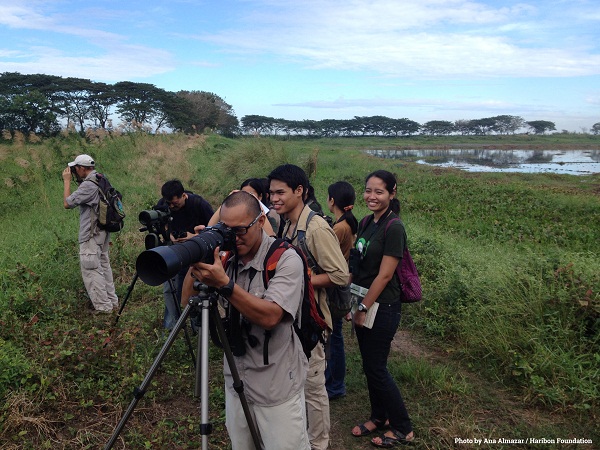Most flights from Alaska to Manila require at least one stopover. But the Bar-tailed Godwit, a small bird that escapes the cold winters of Alaska for the tropical climates of the Philippines to New Zealand, can do the flight non-stop in eight days.
This is the longest continuous journey that has ever been recorded for a landbird, and possibly the most exhausting flight ever experienced by a tourist.
May 10 is World Migratory Bird Day, an annual awareness-raising campaign highlighting the need for the conservation of migratory birds and their habitats.

Two thousand species of birds make regular seasonal movements all around the world, and 64 globally-threatened species can be found visiting the Philippine islands.
David Quimpo, wildlife researcher of the country’s oldest biodiversity conservation group, the Haribon Foundation, has spent hours on the field studying migratory birds.
“Migratory birds are the indicators of the health of our environment. These bird species are shared not only by us but with other countries,” said Quimpo.
The country’s precious wetland & forest habitats are important rest stops and destinations for these feathered tourists. Birds take the risk of traveling long distances to escape the harsh winters of the north from September to March. In between their journey, they search for places to rest and feed.
Half a million of them stop by or pass through the Philippines, where they intend to find food and regain the weight they lost. Migratory waterbirds, in particular, look for food in wetlands and coastal areas like mangroves, estuaries, mudflats, bays; or freshwater areas like large lakes, rivers, and even rice fields. One of the more frequent sightings is the large, white, egrets flying over coastal and wetland areas, also known as tagak.
Why care about our feathered tourists?
These same mangroves, coastal areas, and wetlands that migratory birds rely on are important places human beings depend on as well. These habitats contribute greatly to human life; mangroves provide protection against storm surge and also a source of livelihood, while bays and lakes provide fish and recreation, among a vast number of other things that they offer.
Without these habitats, our feathered tourists will stop visiting, and humans will be further exposed to calamity, as well as the dangers of depleted fisheries and unhealthy coastal areas.

Join the welcome
Haribon Foundation organizes the annual Welcome to the Birds, a movement initiated by the world’s largest biodiversity conservation partnership BirdLife International.
Everyone is invited to join birdwatching activities, coastal clean-ups, and learning sessions to help spread awareness about migratory birds and the habitats that we share with them.
To help, sign up for the Haribon Foundation’s newsletter Haring e-Bon at www.haribon.org.ph, or join Haribon Membership to get further opportunities to learn and help save the Philippines’ migratory bird destinations.

